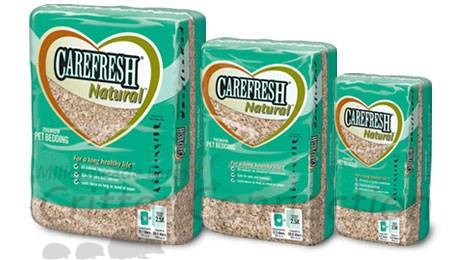Last Updated on July 31, 2022.
Type
- Unfortunately, we have yet to find the perfect bedding to use with our hedgehogs. Almost every hedgehog owner and veterinarian has slightly different recommendations and opinions.
- Keep in mind no bedding manufacturer is going to label their product as inferior or dangerous to your pet. All bedding packages will say that particular bedding is healthy and safe.
- One needs to evaluate each type of the bedding’s benefits, as well as its risks and problems. Factors to take into consideration include accessibility, toxicity, appearance, frequency of cleaning, and costs.
- The type of bedding you choose and use is one of the key factors in helping to determine the overall health and happiness of your pet.
- Most wood, paper, or other processed bedding will be dusty. Each brand will have different amounts of dust. Handling practices of the bags and use can affect the amount of dust in individual bags.
- Fluffy beddings tend to stick to your hedgehog’s quills and make quite a mess on the floor. This bedding can also be hazardous to your vacuum, by clogging it!
- We suggest avoiding fragrant bedding or any bedding that has added chemicals.
- A deep layer of bedding will provide room for you to scoop under your hedgehog and will also provide a burrowing opportunity for your pet.
Health Considerations
- Keep in mind some hedgehogs (and humans) are allergic to different types of bedding. If you notice a rash or skin irritation and you have eliminated mites as a source of the problem, you may need to change the type of bedding you are using.
- Some owners have noticed hedgehog sensitivities to bedding that has added coloring.
- Most commercial bedding that you purchase at a pet store can harbor mites. Mites can contaminate bedding at the source, at the distribution warehouse, or at the pet store.
- A manufacturer can create a product that is mite free but they cannot control the environment from its facility to your home.
- It is always a good idea to inspect each new bag of bedding to make sure there is no contamination.
- One of our customers purchased a bag of quality bedding that was contaminated with mites when the bag was first opened. It never hurts to be too careful.
- If mites do become an issue, it may be worthwhile to switch to a different brand or different type of bedding from a different store until the problem is rectified.
- Hedgehogs are low to the ground so bedding can come in contact with their genital areas. You will need to monitor your hedgehog for signs of irritation or infection. Small particles can cling to these openings and cause urinary blockage.
- It would be a wise idea to check your hedgehog at least once daily to ensure there are no issues with the bedding.
- Dark colored bedding may disguise the true color of the hedgehog’s feces. Observing hedgehog bowel movements is an important and simple way to monitor your hedgehog’s health.
- Soft woods such as pine are common but contain a certain risk because of the chemical components in the wood. The only pine bedding considered safe for hedgehogs is kiln-dried pine.
- Hedgehogs have a tendency to taste new beddings as part of their inquisitive nature. A small bedding sample typically isn’t harmful, but hedgehogs can develop bowel impactions from eating too much litter. It is difficult to determine exactly how much is too much, but more than simple exploration would warrant removing the new bedding.
Use Recommendations
- Almost every brand and type of product will tell you they are the best. We have yet to see a product that says it doesn’t work well but you should try it anyway. You will have to decide what product is best for you.
- We suggest starting out with the same type of bedding that we use. The fewer changes for your hedgehog in the beginning, the better, but once your hedgehog is acclimated to its new home, it will accept the changes much easier.
- We have seen young hedgehogs ingest copious amounts of new bedding simply out of curiosity. This strange behavior is relatively rare, but please be observant of your new pet.
- Remove your bedding immediately if you notice your hedgehog eating more than a sample “taste test.” Hedgehogs use their mouth and nose to explore so it is natural for them to sample the new bedding. Try introducing new bedding slowly to see how the hedgehog reacts.
- Hedgehogs enjoy rooting around in bedding.
- A two-to-three inch thick layer of bedding is recommended for many types of pelleted litter and shavings.
- Only the soiled portions of the litter need to be removed on a regular basis. How accurate your hedgehog is with the litter pan and the type of bedding you are using will determine how frequently you will need to clean. Cleaning frequency can be as often as daily spot cleans or monthly complete bedding exchanges.
- Deep bedding may seem wasteful but some bedding brands recommend it to improve the function of the litter and rooting is a good enrichment activity for your hedgehogs.
- Any type of wood and most processed paper products in the form of shavings or flakes can be dusty after they have had a chance to break down. Excessive dust in shavings can cause pets to sneeze or cause respiratory problems.
- A good rule of thumb for any bedding material is that if it has a noticeable odor, it probably isn’t safe.
Contributiors: Gail Smith, Nicole Belval, formerly of Prickly Pair Hedgehogs; Christine Riddle, Riddles’s Hedgehogs, & Shelly Fowler, Beach Bum Hedgehogs, Melissa Ramos






